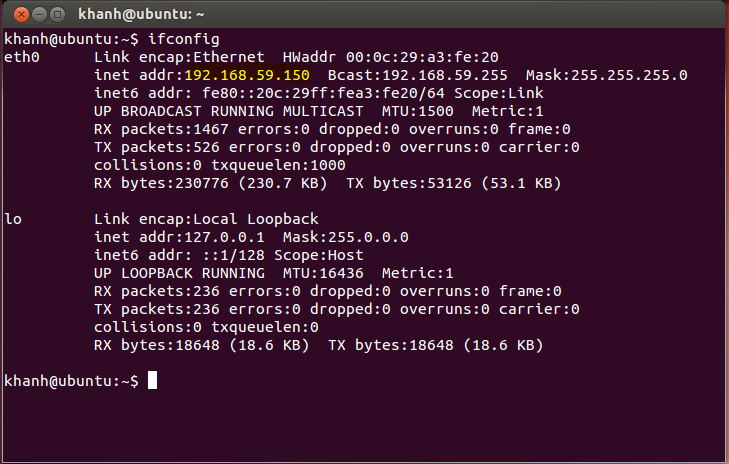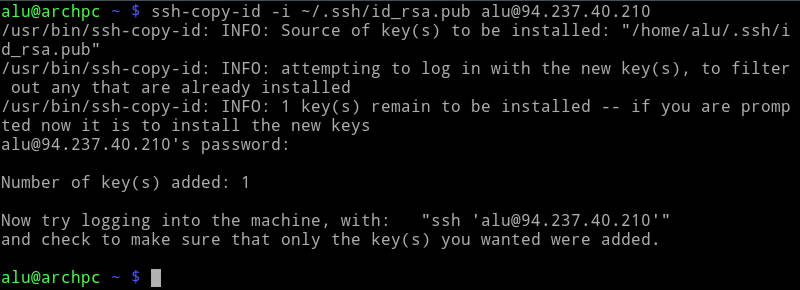
Once complete, the user that has access to the associate private key will then have access to connect to this host machine. To allow another to authenticate to the server, just copy and paste their public SSH key into this file and save it. We can see that our public SSH key has been added to this file. This file contains a list of public SSH keys which have been granted access for authentication.

Within that folder will be a file named authorized_keys. After SSHing into the remote host, go into the.

Since ssh-copy-id is just a helper script, let's find it what it's actually doing in the event we want to manually add keys for authentication in the future. You should now be SSHed into the server without being prompted for a password. To confirm you can ssh into the remote server with your SSH key and without a password, just type ssh and hit enter.
SSH COPY ID MAC OS X PASSWORD
Once you type in your server password and hit enter, the SSH key will have been copied to the remote server. You'll most likely be prompted for a password. Let's ssh-copy-id followed by the user name that you which to SSH as, followed an followed by the IP address or the host name of the remote host. There's a simple helper command that makes this really easy, called ssh-copy-id. And it keeps getting better every few weeks or months.Instructor: Once you have generated your SSH private and public keys, the next step is to copy the public key to the remote server you wish to authenticate against. You can get the file contents by either opening the file in a text editor or by running the following command: cat /.ssh/idrsa.pub. Paste the contents of the idrsa.pub file that you created into the Public Key field. (It's possible Terminal does some of the things I mention here-it's been so long since I've used it that I don't recall, but when I switched I paid close attention to the differences and there were lots of advantages to iTerm. The key must reside in the same region as the server. /usr/bin/ssh-copy-id: INFO: Source of key(s) to be installed: idrsa.pub Number of key(s) added: 1 Now try logging into the machine, with: ssh root192.0. I've been using it for years now and have never missed Terminal. Development is pretty active, but documentation seems to lag behind. Some are mentioned here but some are not, such as co-processes, triggers,smart selection, semantic history, and so on. paste history (a good complement to the shells' command histories)Īnd a lot more.a full-screen view (and you can choose from either its own or OS X's built-in full-screen mode I greatly prefer iTerm's own full-screen mode, since it doesn't force you to move to a new 'Space', thus allowing Command-Tab to still work properly).Terminal-level auto-completion (I don't use this feature so I can't detail how it has advantages over shell-level autocompletion: especially if you use the fish shell or zsh, then it may not be better).Special provision for integrating with tmux (an alternative to GNU screen, and which most people regard as better & faster than screen).



 0 kommentar(er)
0 kommentar(er)
